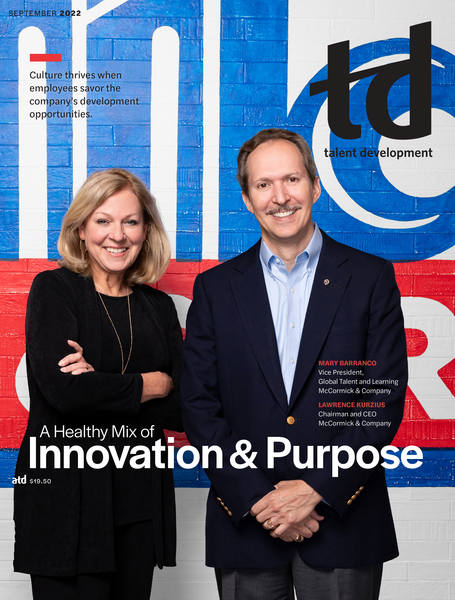TD Magazine Article
Flexible Workplace Wisdom
A review of How the Future Works: Leading Flexible Teams to Do the Best Work of Their Lives by Brian Elliott, Sheela Subramanian, and Helen Kupp
Thu Sep 01 2022
How the Future Works: Leading Flexible Teams to Do the Best Work of Their Lives
By Brian Elliott, Sheela Subramanian, and Helen Kupp
Wiley, 240 pp., $30
Today's leaders face an even more challenging task than they did at the beginning of the pandemic. They need to design a work environment that incorporates the flexibility of remote work while rebuilding connections and meeting the various needs of employees in a competitive job market.
Many employees now transition between remote and in-person work, which means the remote/in-person composition of a team may differ any day. Planning requires even more critical thinking than it did in the past. The remote/in-person dynamic also opens up the potential for inclusivity challenges where some employees are left out of staff interactions and discussions. This workplace requires a new framework, a new set of tools, and newer management responsibilities. How the Future Works can help with that.
It is a playbook that should be on every work-from-home office shelf. It's a practical book that provides the guidance all organizations need to have a successful flexible work environment, such as the hybrid workplace. "The workplace will now be wherever work happens and the workweek will be whenever work happens best for each person," explain Elliott, Subramanian, and Kupp. Sounds like Utopia, right? For employees, sure, but for HR and organizational leaders, that may sound like a nightmare.
The authors offer a road map and toolkit to make this a manageable, worthwhile, and beneficial effort. They detail seven steps to help employers transition to or improve a flexible work environment. Those steps shy away from the traditional top-down approach and focus on asking leaders to co-create this new environment with their team members.
The authors also share specific stories and examples from companies that have implemented such steps so readers are able to understand the context and application. And they are quick to remind that the alternative is low productivity, weak engagement, and poor retention. With that in mind, this approach is critical for every employer that wishes to remain competitive.
Don't worry about poor engagement survey results, the Great Resignation, and productivity. Instead, follow the practical techniques outlined in this book to design the type of workplace where even you want to work. I truly enjoyed the book, and I'm looking forward to implementing those concepts in my own work as well as blogging about them.
You've Reached ATD Member-only Content
Become an ATD member to continue
Already a member?Sign In

